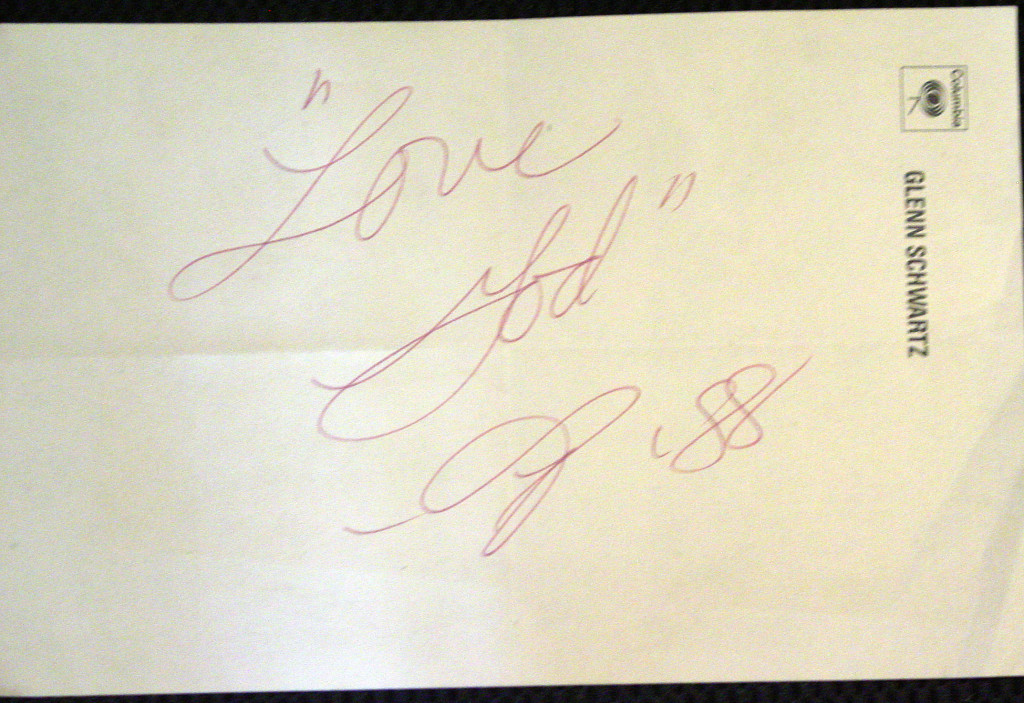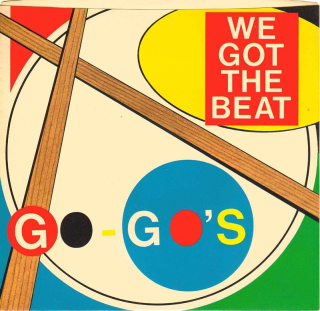Celebrating Daryl Hall’s birthday today on the playlist
Follow Tunes Du Jour on Facebook
Follow Tunes Du Jour on Twitter
Follow me on Instagram
As the new decade dawned, 1981 emerged as a year of significant musical transformation. The eclectic mix of songs that defined this period reflected a music industry in flux, with established genres evolving and new sounds emerging to captivate listeners across the globe.
Rock music continued to hold its ground, adapting to the changing times. The Rolling Stones proved their enduring relevance with the gritty “Start Me Up,” while Journey’s “Don’t Stop Believin'” became an arena rock anthem that would stand the test of time. Bruce Springsteen’s “The River” showcased his storytelling prowess, and Phil Collins’ “In The Air Tonight” introduced a new dimension of atmospheric rock with its iconic drum break. George Harrison’s “All Those Years Ago,” a touching tribute to John Lennon, marked Harrison’s first U.S. top ten single in eight years, demonstrating the lasting appeal of the former Beatles.
New Wave and post-punk sounds flourished in 1981, pushing boundaries and incorporating electronic elements. Talking Heads’ “Once in a Lifetime” demonstrated the genre’s art-rock leanings, while The Go-Go’s brought a pop sensibility to new wave with “Our Lips Are Sealed.” Duran Duran’s “Girls on Film” hinted at the new romantic movement that was gaining traction. The Psychedelic Furs’ “Pretty in Pink,” with its blend of post-punk edge and pop accessibility, showcased Richard Butler’s distinctive vocals and would later inspire and lend its name to a defining film of the ’80s.
The year also saw the emergence of hip-hop as a force in popular music. Blondie’s “Rapture” became the first song featuring rap vocals to reach number one on the U.S. Billboard Hot 100, fusing new wave with hip-hop influences. Meanwhile, Grandmaster Flash’s innovative “The Adventures of Grandmaster Flash on the Wheels of Steel” was one of the first records to extensively use sampling, laying the groundwork for hip-hop’s future.
Dance music was evolving beyond disco into new, exciting forms. Grace Jones’ “Pull Up to the Bumper” blended funk, new wave, and reggae influences, pointing towards a more eclectic and experimental future for club music. Taana Gardner’s “Heartbeat” helped define the emerging genre of garage house with its stripped-down beat and soulful vocals. Kool & the Gang’s “Celebration” remains a party staple, bridging the gap between disco and contemporary R&B.
In the realm of R&B and funk, Luther Vandross’ “Never Too Much” marked the acclaimed background vocalist’s first hit under his own name, showcasing his smooth, sophisticated style. Rick James pushed funk to new heights with “Super Freak,” incorporating rock elements and a memorable synth line that would be sampled for years to come. The Pointer Sisters’ “Slow Hand” kept R&B smooth and soulful.
1981 also witnessed the continued rise of synth-pop and electronic music. Heaven 17’s politically charged “(We Don’t Need This) Fascist Groove Thang” and New Order’s “Ceremony” showcased the genre’s range from danceable pop to moody post-punk.
As some artists embraced new sounds, others used music to comment on social issues. The Specials’ “Ghost Town” reflected the urban decay and racial tensions in Britain, while Black Flag’s hardcore punk anthem “Rise Above” railed against societal norms. Prince’s “Controversy” challenged listeners both musically and lyrically, blending funk, rock, and new wave while tackling taboo subjects and questioning social norms, hinting at the boundary-pushing artist he would become.
From the chart-topping pop of Kim Carnes’ “Bette Davis Eyes” and Olivia Newton-John’s “Physical” to ABBA’s emotionally charged ballad “The Winner Takes It All,” 1981 was a year of contrasts and transitions. It was a time when established stars adapted to new trends, emerging artists made their mark, and genres blended in exciting ways. This rich musical landscape set the stage for the diverse and innovative sounds that would define the rest of the decade, making 1981 a pivotal year in the evolution of popular music.
Follow Tunes Du Jour on Facebook
Follow Tunes Du Jour on Twitter
Follow me on Instagram
Prince Rogers Nelson, known mononymously as Prince, was a musical innovator whose influence spanned across genres, decades, and generations. His work was characterized by a remarkable blend of funk, rock, R&B, and pop, with hits like “Purple Rain,” “When Doves Cry,” and “Kiss” showcasing his unparalleled ability to craft songs that were both commercially successful and artistically groundbreaking. With his enigmatic persona and prolific output, Prince left an indelible mark on the music industry, redefining the boundaries of popular music.
Prince’s contributions to music were not just about his hits; he was a consummate artist who played multiple instruments, wrote and produced his own songs, and constantly pushed the envelope with his sound and image. His album 1999 marked a significant moment in the early 1980s, with the title track and “Little Red Corvette” becoming anthems of the era. The follow-up, Purple Rain, not only solidified his status as a superstar but also won him an Academy Award for Best Original Song Score, demonstrating his versatility and broad appeal.
Throughout his career, Prince garnered numerous accolades, including seven Grammy Awards and induction into the Rock and Roll Hall of Fame in 2004. His work with the Revolution, the New Power Generation, and his solo projects consistently garnered critical and commercial success. Songs like “Raspberry Beret,” “Sign ‘
Beyond his musical genius, Prince was also known for his philanthropic efforts. He was a quiet but significant supporter of various causes, often using his resources to help those in need without seeking the limelight. His contributions included support for initiatives focused on education, such as the Yes We Code project, which aimed to teach coding skills to young people from underrepresented backgrounds. Additionally, he donated to organizations like Harlem Children’s Zone and Green For All, reflecting his commitment to social justice and community empowerment.
Prince’s legacy is one of innovation, generosity, and an unwavering dedication to his art. His music continues to inspire and influence, a testament to his genius and the enduring power of his work. From the infectious grooves of “U Got the Look” and “Gett Off” to the messages in songs like “Sign ‘
Follow Tunes du Jour on Facebook
Follow Tunes du Jour on Twitter
Follow me on Instagram
I missed Prince’s debut album, For You, when it was released in 1978. My first exposure to him was hearing “I Wanna Be Your Lover” on the radio. It became a hit when I was in high school. Good song. Then I saw the video. Not what I expected. Before then I thought Prince was a trio of Black women, like The Emotions. My first visual exposure to Prince and already he was throwing my expectations.
His third album, 1980’s Dirty Mind, got a fair amount of press in music magazines, and its cover art made an impression. I was interested in the guy.
“Controversy” was a single my freshman year in college. The song grabbed me, and so I bought the 45, my first Prince record.
The life-changing moment came the following year, when I heard “1999” on KISS-FM in Boston. Holy crap! It blew my mind. It sounded like nothing else on the radio at that time or any other time. At that moment I became a big fan. I got a ride into Harvard Square, went to the Harvard Coop (the university’s bookstore/ record store/ probably other things I can’t remember store) and bought the 1999 album. (The same day I bought Michael Jackson’s Thriller. Can you believe the two albums came out a month apart? What a time to be alive!)
From that point on I was a certified Prince fanatic. I bought the first four albums. I bought subsequent albums on the days of release. I bought the twelve-inch singles, and eventually the CD singles. And for quite a stretch there Prince continued to blow my mind. I’m still awed by his genius and marvel at how he thought to do unconventional things with his music, such as removing the bassline from “When Doves Cry,” the only number one on the dance chart to not have a bassline.
I’ve met many great talents over the years. Brian Wilson. Tina Turner. Smokey Robinson. Norman Fell. But nothing compared 2 meeting Prince. It was in 1988. He didn’t say a word, though he did sign my work stationery:

Putting together a Prince playlist and disciplining myself to keep it to thirty songs is a tough task, especially as a Prince fanatic, but I persevered. I’m not saying these are his thirty best songs, nor are they his thirty most popular songs, nor are they my thirty favorites of his songs. It’s a mixture of all three of those categories (which, of course, have a lot of overlap). I threw in some of the hits others had with songs he wrote. It’s by no means complete, but it’s a start.
(The Spotify embed feature is STILL broken. Here is the link: https://open.spotify.com/playlist/3TrbpWDHR6CzcYRHmvSrRA?si=4367f868ddcf4e52)
Follow Tunes du Jour on Facebook.
Follow Tunes du Jour on Twitter.
Follow me on Instagram.

Inspired by the August 17 birthdays of Go-Go’s’ Belinda Carlisle, Lone Justice’s Maria McKee, Lisa Coleman, Dexy’s Midnight Runners’ Kevin Rowland, Luscious Jackson’s Jill Cunniff, The Pack’s Lil B, and Robert De Niro.